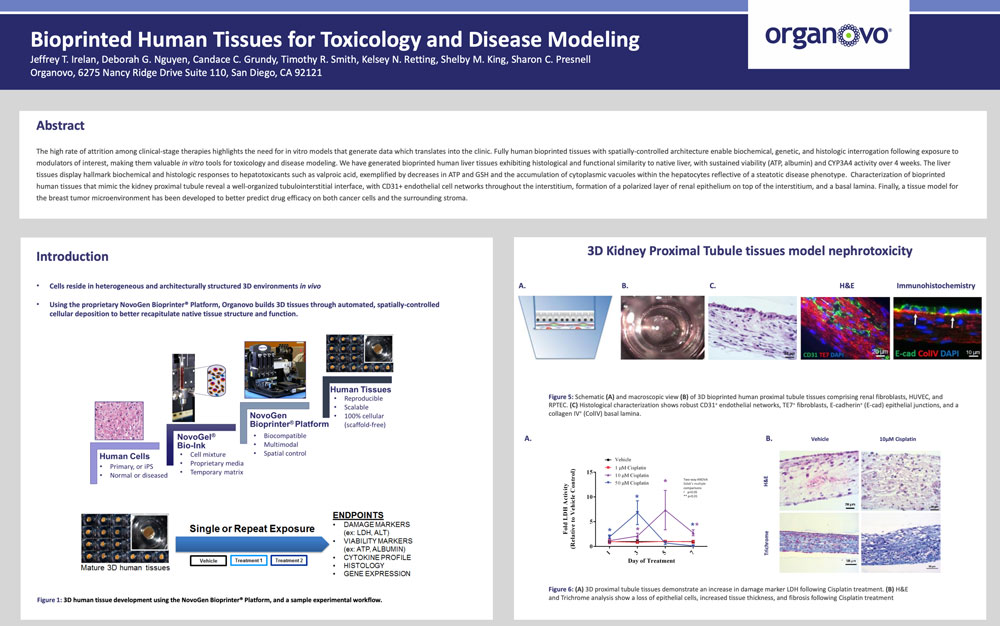Bioprinted human tissues for toxicology and disease modeling
Publication Summary:
The high rate of attrition among clinical-stage therapies highlights the need for in vitro models that generate data which translates into the clinic. Fully human bioprinted tissues with spatially-controlled architecture enable biochemical, genetic, and histologic interrogation following exposure to modulators of interest, making them valuable in vitro tools for toxicology and disease modeling. We have generated bioprinted human liver tissues exhibiting histological and functional similarity to native liver, with sustained viability (ATP, albumin) and CYP3A4 activity over 4 weeks. The liver tissues display hallmark biochemical and histologic responses to hepatotoxicants such as valproic acid, exemplified by decreases in ATP and GSH and the accumulation of cytoplasmic vacuoles within the hepatocytes reflective of a steatotic disease phenotype. Characterization of bioprinted human tissues that mimic the kidney proximal tubule reveal a well-organized tubulointerstitial interface, with CD31+ endothelial cell networks throughout the interstitium, formation of a polarized layer of renal epithelium on top of the interstitium, and a basal lamina. Finally, a tissue model for the breast tumor microenvironment has been developed to better predict drug efficacy on both cancer cells and the surrounding stroma.View Publication
